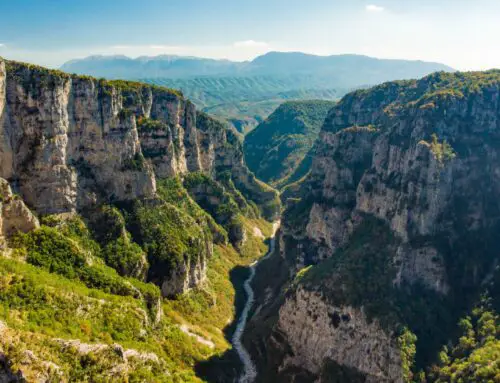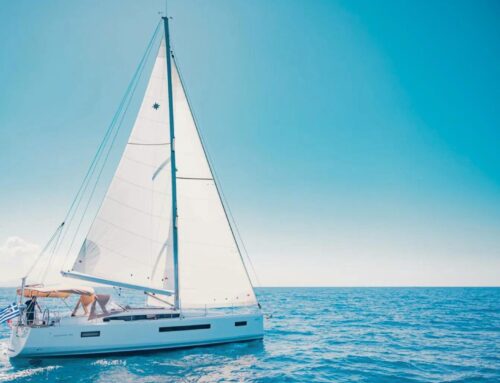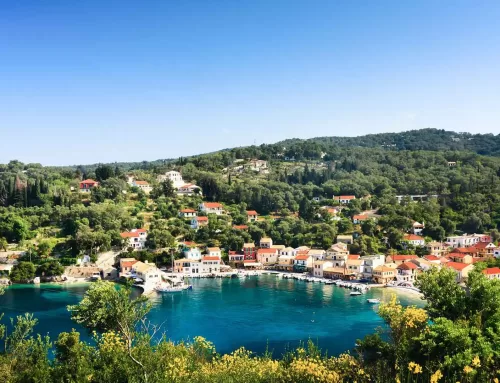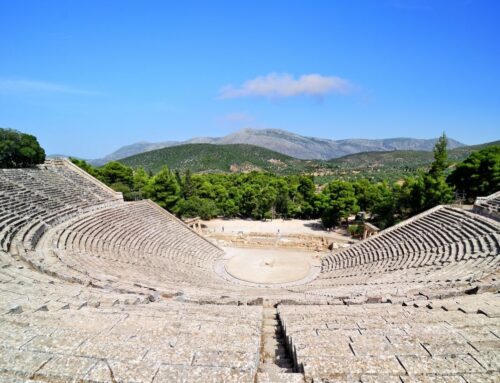
Greek Island Groups – 7 Greek Island Complexes
Greek Island Groups – 7 Greek Island Complexes

Search for your next destination...
☞ Table of Contents:
Don’t have time to read at the moment? Pin it for later!



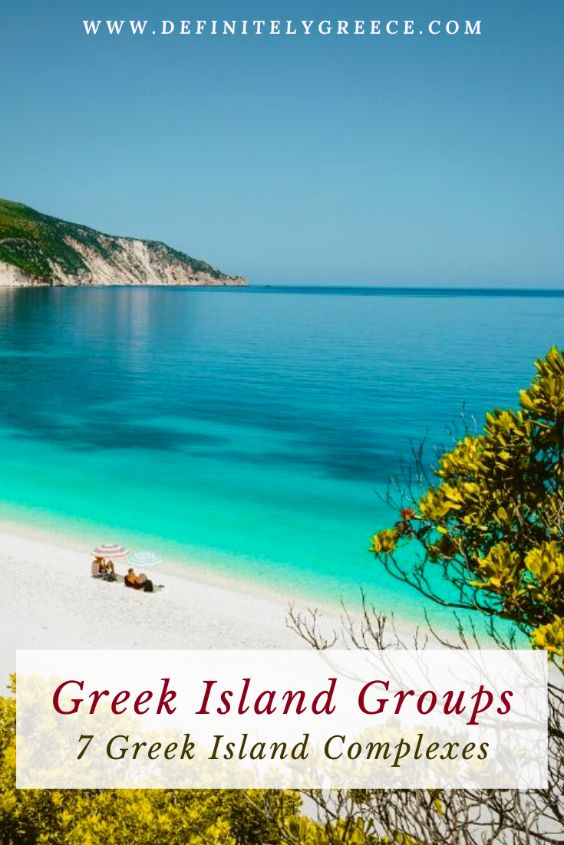
The Greek islands are best understood when broken down into groups or “families”. These clusters of Greek islands share common characteristics and influences in culture, architecture, climate and cuisine. Being aware of the Greek island groups makes it easier to narrow down your travel options. After all, there are over 220 inhabited islands in the Greek archipelago, each one offering visitors unique experiences and travel options.
Greek island groups are primarily separated between the Aegean and Ionian Seas.
The Aegean is where most of the Greek islands can be found and where 6 of the 7 main island groups are located.
Why is it a good idea to keep in mind the different Greek island groups when planning your trip?
If you are planning on island hopping or exploring more than one island within Greece you might want to become familiar with the different island clusters and their locations. This will help greatly during the planning stages of your trip and allow you to spend more time experiencing the islands rather than travelling in between faraway spots.
What are the 7 main Greek island groups?

How are these Greek island groups different from each other?
- Eptanisa – also known as the Ionian Islands. These are 7 main islands that are heavily influenced by the 400 years of Venetian occupation. They were also the only part of Greece that was not part of the Ottoman empire. The Italian language was often used during that time by the upper class and there are still traces of that influence within the language, music and cuisine.
- Cyclades – This island group is located in the centre of the Aegean Sea and contains over 2,000 islands and islets even though only about 33 of them are inhabited. They have been important spots of civilization, trade and culture since the Neolithic Age and took its name from the “cyclos” or circle that is formed around Delos, the most important religious centre in the Classical periods and one of the most important archaeological sites in Greece.
- Dodecanese – The Dodecanese island group is dominated by the presence of Rhodes, the largest of the islands in the complex. Together with a dozen more main islands and more than 150 smaller islands, they have retained a long and rich history and have often served as a bridge between East and West. Very close to the Turkish coast they are characterized by long, dry summers and lots of sunlight year-round.
- Northern Aegean – A semi-arbitrary complex of Greek islands, remote yet easily reached by plane or ferry. You will come across many of these Greek islands in mythology or the classic tales of Homer. A rich history, beautiful beaches and very strong local flavours, yet relatively undiscovered.
- Sporades – The name of this complex of Greek islands translates to “scattered” and can broadly apply to all islands outside of the Cyclades. While you may see some maps refer to other island groups in Greece as Northern Sporades, Western, Eastern or Southern Sporades, the name is mostly used for the four main islands on the east coast of Greece, north of Euboea.
- Saronic Gulf – This is the most accessible island group from Athens and preferred by wealthy Athenians, yachters as well as Greek and international artists. Hydra, in particular, has been a sanctuary for poets, writers and filmmakers with the most often mentioned being Leonard Cohen and Axel Jensen.
- No category – Two main Greek islands that remain uncategorized and don’t fit within any of the above mentioned Greek island groups are Crete and Euboea. They are the first and second-largest islands of Greece, with Crete being the most famous and Euboea the one that is often not regarded as an island due to its size and proximity to land.
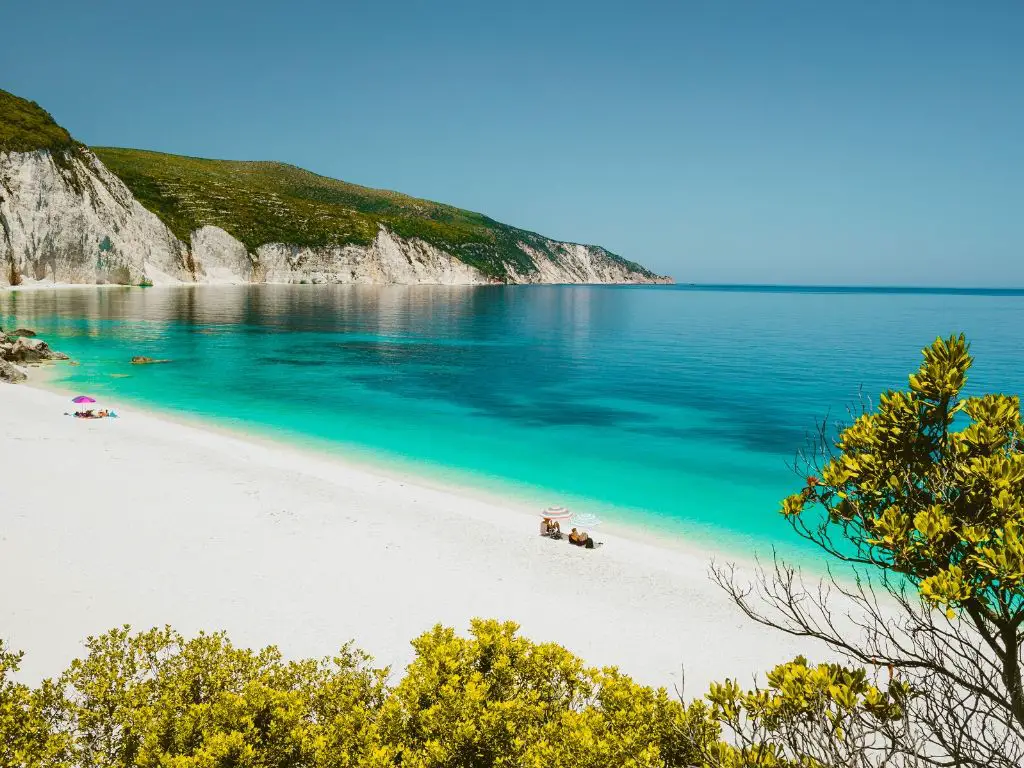
Eptanisa
- Lots of greenery, Italian influences, fertile lands and a slightly shorter and wetter summer season compared to the Cyclades. They are not very windy and have sensational swimming spots that are best explored from a yacht. The beaches are characterized by limestone rock formations, sand and smooth pebbles. Nature and scenery are the main attractions, as well as the picturesque ports and relaxed atmosphere.
- Corfu and the old Corfu Town that is a World Heritage site is one of the most sophisticated islands in the Ionian island group. Zakynthos or Zante is home to the famous “Navagio Bay” (Shipwreck Beach) and Cephalonia is undoubtedly popular for its beaches and picturesque villages.
- Main islands: Corfu, Paxos and Antipaxos, Ithaka, Lefkada, Kefalonia, Zakynthos.

Cyclades
- The most numerous of the Greek island groups, they embody the classic picture of the Greek islands, with whitewashed buildings and blue-domed churches, clustered villages and barren mountainous terrain. The Cyclades are hit by meltemi winds during the summer months. These strong northerly winds are found primarily in the Aegean Sea and can range from refreshing to table-turning. The Cyclades are also home to the most popular and well known of the Greek islands, Santorini and Mykonos. They are lively, picturesque and iconic representations of island life in Greece and they stay busy from mid-spring until early autumn. The Cyclades have some hidden gems that are unknown to most international visitors you should aim to discover!
- The most popular of the islands in the Cyclades are undoubtedly Santorini and Mykonos. The latter attracting a younger and more party inclined crowd, in contrast to the romantic and couple friendly atmosphere of Santorini.
- Main islands: The primary island list includes Amorgos, Anafi, Andros, Paros, Antiparos, Koufonisia, Milos, Naxos, Mykonos, Santorini or Thira, Kythnos, Kimolos, Kea, Ios, Folegandros, Serifos, Sifnos, Sikinos, Syros, and Tinos.

Dodecanese
- These islands are closest to Turkey and are mostly defined by the presence of Rhodes and Patmos. They are easily accessible by plane through Rhodes or the smaller regional airports in Kos, Kalymnos, Karpathos, Kasos, Leros and Astypalaia. They can also be reached by ferry, however, the journey from Piraeus port in Athens will be almost one full day. The Dodecanese island groups are secluded with a long and rich history and a relaxing pace of life that appeals to travellers that seek authentic travel and rich cultural experiences.
- Rhodes is the largest, most well known and most visited island in the Dodecanese island group. Patmos has a spiritual character and is where John the Apostle wrote the Book of Revelation, while Kos is the second most visited of the Dodecanese islands, famous for its beaches, traditional character and historical sites.
- Main islands: Rhodes, Symi, Tilos, Astypalaia, Kalymnos, Karpathos, Kasos, Kos, Leros, Nisyros, Patmos. The smaller Kastellorizo, Lipsi, Halki and Agathonisi are also found in this Greek island group.

Northern Aegean
- This complex of Greek islands is not as well suited to island hopping due to the size and location of the islands. They are some of the largest islands in Greece each with their own distinctive and peculiar character. The Northern Aegean Islands are underrated, often skipped my international visitors and retain a strong local presence. A lot of the islands here have ties to or stories that link them to Greek mythology, and the 12 Greek gods and goddesses.
- Chios, Ikaria and Samos are some of the islands in the Northern Aegean that might be most familiar to foreigners. Chios is known for its unique cultivation of “mastic” a gummy resin that seeps out of the Pistacia lentiscus tree, found only in the south part of the island. Ikaria has landed a spot in the much-coveted Blue Zone list, a collection of spots around the world where people are said to lead healthier and longer lives.

Sporades
- The Sporades are a cluster of 24 islands from which only four are inhabited. They are comparable to the Ionian islands in terms of their verdant landscape, irresistible blue waters and striking nature. The international airport of Skiathos is well connected to the rest of Greece and other European cities and is where most visitors will arrive at. In recent years, neighbouring Skopelos has become famous as the location of Mamma Mia, with plenty of international couples choosing the island for their wedding ceremony. Regardless the islands of the Sporades are known for their tranquility, enviable beaches and slow pace of life. For nightlife lovers and a more lively scene, the island of Skiathos has been a mecca for millennial party lovers.
- Skiathos and Skopelos can be considered the most popular of the four islands in the Sporades. For Skiathos, this is due to its international airport and popularity with younger travellers, while Skopelos gained worldwide fame as the unspoiled and tranquil Greek island where Mamma Mia was filmed.
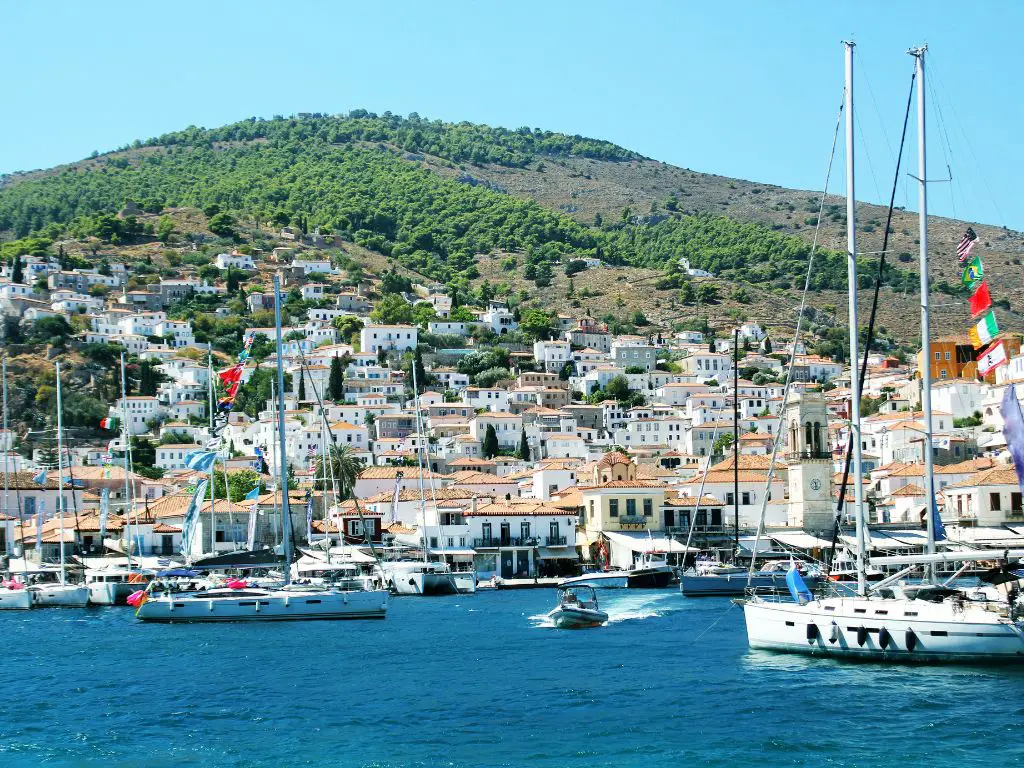
Saronic Gulf
- They are Aegina, Salamina, Poros, Hydra, Spetses, Agistri, and Dokos.

Crete & Euboea
*Disclaimer: This page might include affiliate links. If you decide to book something through one of them, I might get a little bonus, but it won't cost you anything extra.*







